I love a good military fort; it doesn’t matter the age or state it’s in. I’ve visited many forts surviving here in Canada and the United States from almost every era of conflict. From the French & Indian War, through the American Revolution, War of 1812, Rebellions, Civil War, and into the 20th Century. It is even better how well many of them are preserved and how those who work for those forts make them come alive. Earlier in the month, I had the chance to visit a favourite, Old Fort Henry in Kingston, Ontario, with my family to show it off to my wife and little guy.
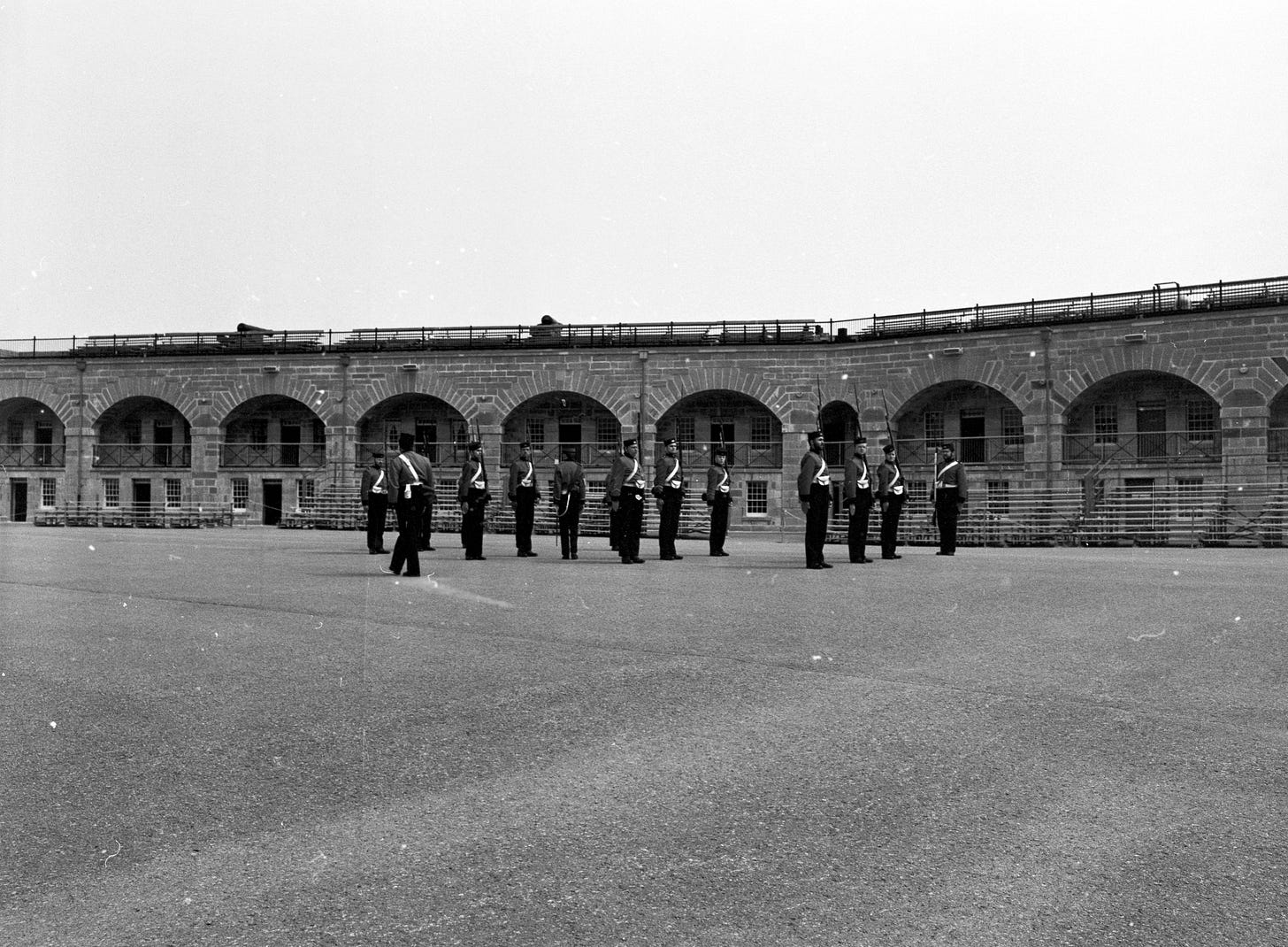
Kingston, Ontario’s position near the mouth of the St. Lawrence River made it ideal for controlling traffic flow into and out of the Great Lakes. For thousands of years before the arrival of French explorers, indigenous cultures lived here, as far back as 9,000 years. The French would first establish a military and trading post in 1673, naming it Fort Cataraqui, taking the name from the indigenous name, “Great Meeting Place” (or the place where one hides”, “impregnable”, “muddy river”, “place of retreat”, “clay bank rising out of the water”, “where the rivers and lake meet”, “rocks standing in water”, or “place where the limestone (or clay) is). Following the French and Indian War and the dissolution of New France, the British colonial authority also recognised the importance of holding the area, and the natural harbour made it an ideal spot for a Royal Navy Dockyard. The Dock Yard opened in 1788, and royal engineers identified two promontories as perfect spots for defensive work. Lieutenant Alexander Bryce recommended that permanent forts be established at Henry and Frederick points. However, as relations warmed between Britain and the new United States, the works remained only on paper. When the Anglo-American War of 1812 broke out, work began on constructing artillery batteries at the two points and a blockhouse. By October, Point Henry had extensive artillery emplacements, barracks, towers, and a blockhouse in time to fend off an American squadron in November 1812 as they attempted to take out the HM Sloop Royal George. While the Royal Navy Dockyard was not attacked again throughout the war, the fortifications at Point Henry and Point Fredrick were expanded to ensure that no American ship could get close enough to cause damage.

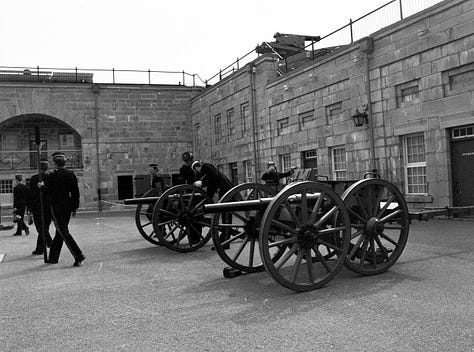
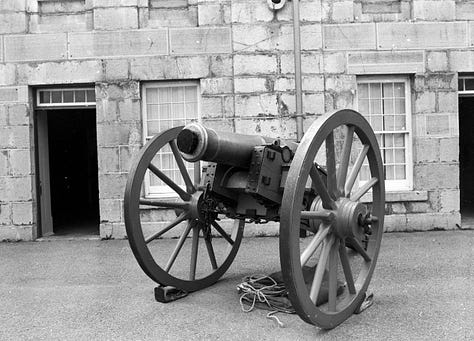
One of the improvements to the defence of Upper Canada following the War of 1812 was the idea of creating a military canal that would allow the flow of troops and supplies away from the St. Lawrence River. Colonel John By of the Royal Engineers played a key role in establishing the canal and envisioned a series of defensive works along the canal route as key points to defend against potential attacks. To protect the entrances to the canal, he designed two forts, one at Bytown (now Ottawa) and the other at Kingston. Both forts would follow the pattern of the other two post-war forts in British North America, the citadels at Halifax and Quebec City. Construction of a new Fort Henry began in 1832, but cost overruns on the project cancelled much of the additional work, including the Fort at Bytown and left many of the planned blockhouses incomplete. Fort Henry was completed in 1836, equipped with heavy cannon, trained gunners, and regular and fencible infantry, which were deployed to repel both water and land assaults with ease. The Fort would never be attacked directly, but its garrison participated in the skirmishes that marked the Upper Canada Rebellion of 1837-8, and the Fort held many captives in those skirmishes. The Pacific Crisis in the 1840s saw the construction of a forward battery and several Martello Towers in Kingston to better defend against potential American aggression. Later, the Fort maintained a watchful eye in the 1860s during the American Civil War and the Trent Affair. Following the Civil War and warming of relations, British Troops left the Fort in 1870, leaving it in the hands of the Canadian Militia with Battery “A” of the School of Gunnery operating the post. The Canadian Militia would continue to occupy the post until 1891, when they disbanded the garrison and marched out for the last time.
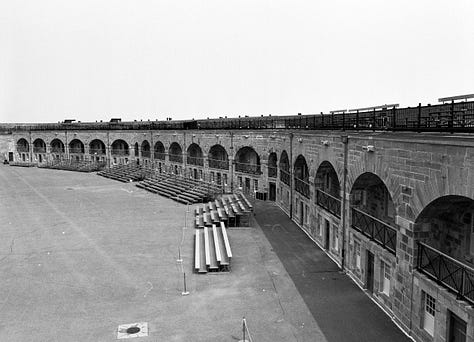

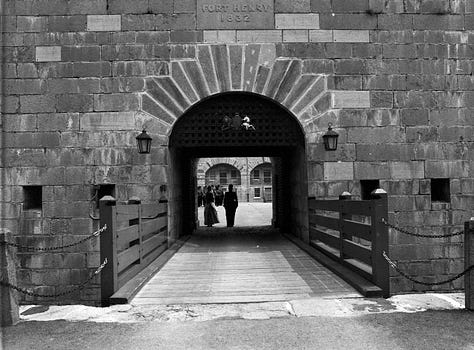
A Training camp opened in 1914 as part of Canada’s involvement in the First World War, while the old Fort was repaired enough to serve in a darker role as an internment camp for ‘enemy aliens’ who were Canadian citizens with German, Austrian or Ukrainian ancestry. These citizens were kept confined until 1920, when the program came to an end. The site was again abandoned and fell into disrepair. Despite being designated a National Historic Site in 1923, it wasn’t until Ronald L. Way began a campaign to help Canadians find meaningful work during the Great Depression that it became a tourist attraction. The government started to restore many of Ontario’s historic forts as part of its broader program to support Canadians. Work on Fort Henry began in 1936, with a grand reopening as a living history museum in August 1938. The Fort would be presented to visitors as it would have been in the 1860s, and employees would portray civilian and military personnel. A dedicated group of men would dress and drill as both infantry, musicians, and artillery gunners from the period, taking the name Fort Henry Guard and even using period weaponry. Life as a museum was short-lived with Canada’s entry into the Second World War in 1939, which saw the Fort again transform into a prison, this time holding prisoners of war. But in 1948, the old Fort was reopened to the public and has continued to be a tourist draw in Kingston. Today, it is part of the UNESCO World Heritage Site that encompasses the Fort and the entire Rideau Canal.
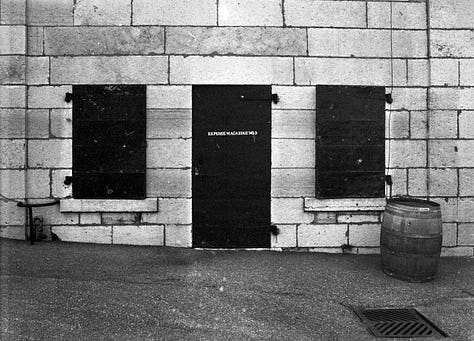
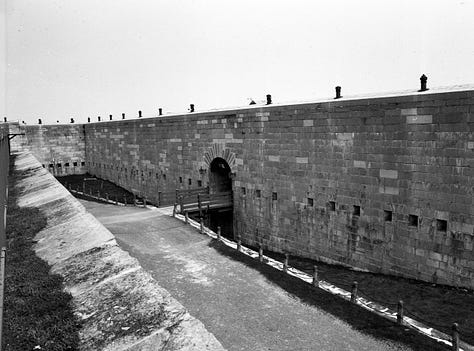

Old Fort Henry is well worth a visit if you’re interested in military history. It is open through the spring and summer, and the Fort hosts a fantastic sunset ceremony. In the fall, they host a haunted house event that takes place around Halloween. It was great to finally return to Fort Henry after many years of trying to revisit it, only to be unable to do so during its regular hours. You can see all my photos from Fort Henry and the family vacation to Kingston on Flickr.



